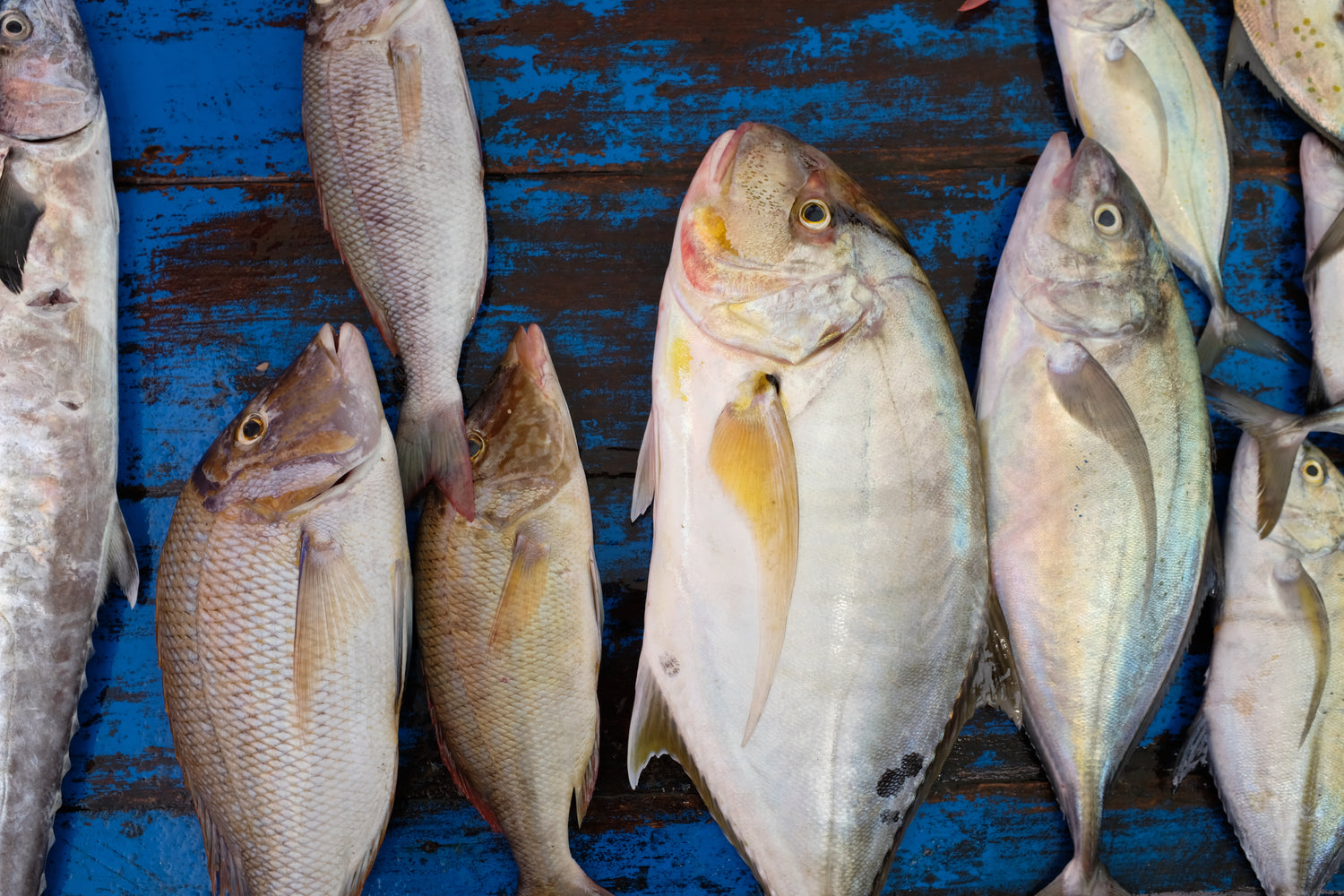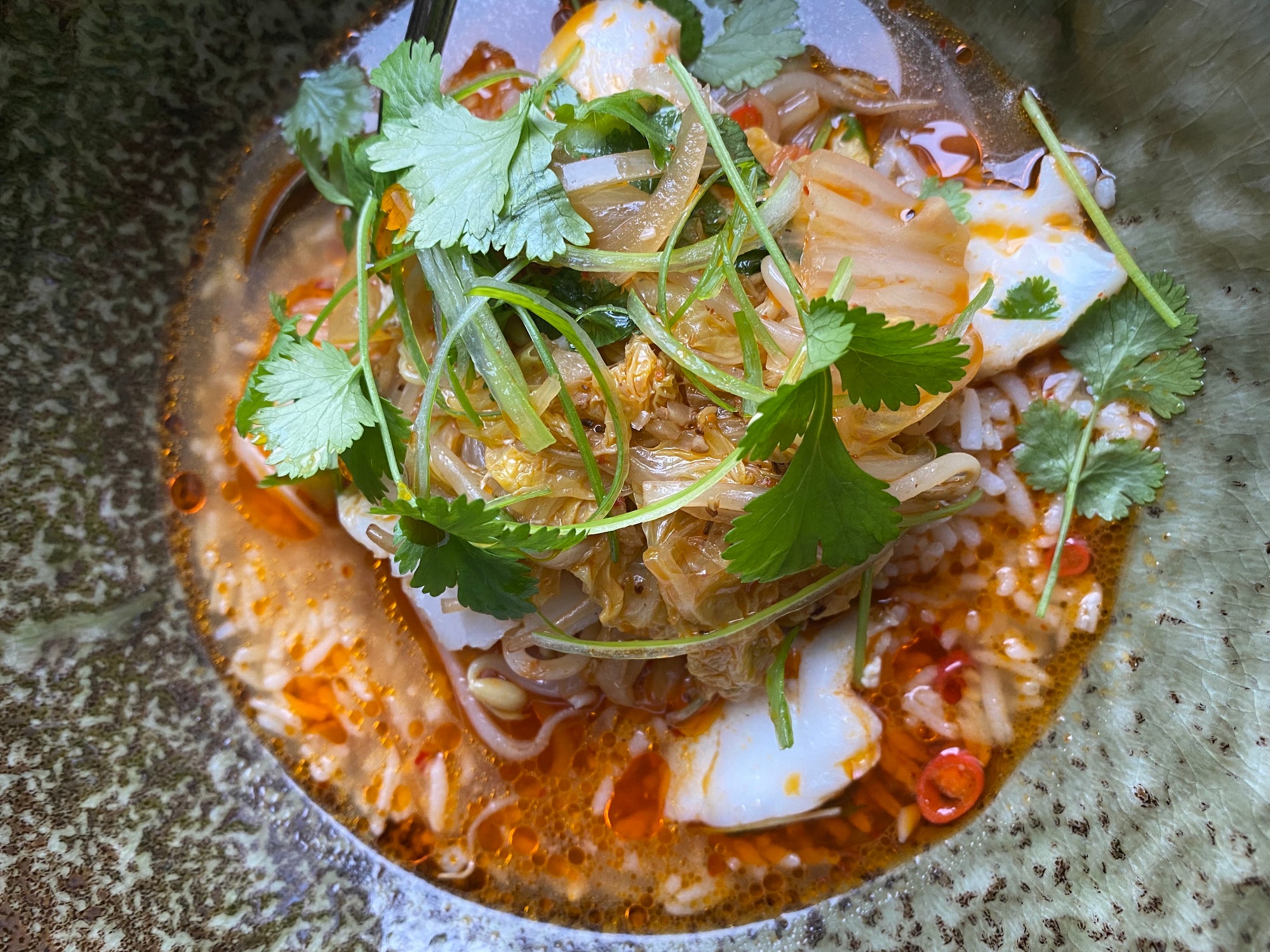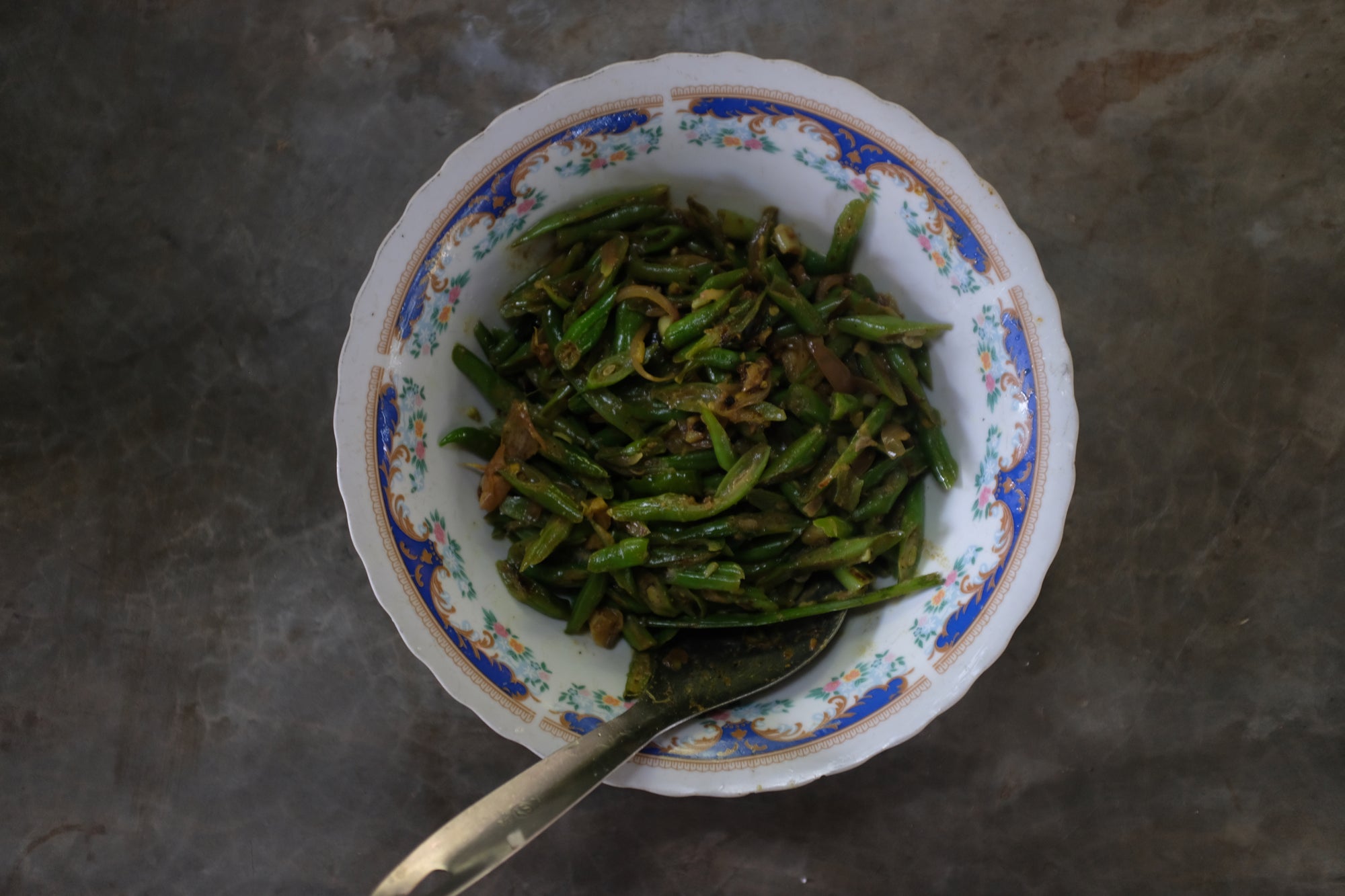Louie looked around in wonder. What was all this? Shrimp jumping up and down in large plastic buckets. Mountains of pink fish on wooden stalls. Eerie looking things with eight arms. Gigantic knives chopping the heads of even more gigantic sea creatures. People screaming on top of their lungs. Others darting around looking intensely at what is on display. All blended with a peculiar smell of the ocean. Seeing a fish market through the eyes of a child for the very first time is probably quite an experience.

Our two year old son got just that when we went shopping at the Negombe wet market for ingredients for our cooking class with the Lantra family. We were on the lookout for shrimp, tuna, small sardine like fish and one of Sri Lankas most beloved catches, crab. Some of the best dishes we had in Sri Lanka was crab. Both ocean catch and the more famous mud crabs caught in the many fresh water lagoons that dot the islands coastline. We really enjoyed both the black pepper crab dishes and the more traditional curry crab cooked in coconut. We will share a recipe of this on a later date.

The cornerstones
Let's talk about coconut. It is probably the most used ingredient in Sri Lanka. That and maybe curry powder. Coconut oil is the oil of choice and coconut milk is added to a lot of dishes for creaminess. Everything is cooked in coconut oil. Most of the time together with local curry powders. This is the prevalent cooking combination we came across. Frying sliced shallots in coconut oil and a spoonful of curry powder. Letting this fuse together for 10-15 minutes and adding spices and main ingredients to this fundament.

The curry powders vary from region to region but one thing stood out. The spice blend is not yellow, it is dark brown. This comes from the long toasting of spices like coriander seeds, fenugreek, cumin and fennel seeds. Turmeric is added when needed and not part of the mixes themselves. Same thing with chili. Sri Lankan curry powder has a roasted, complex flavor with notes of caramel and coffee.
A product of Sri Lanka that adds a very distinct flavor is curry leaves. They are used mostly fresh but also dried or as a powder. Curry leaves grows on the curry tree, Murraya koenigii, and are part of the citrus family. They have a unique citrus flavor combined with herbal and anise notes. The fresh leaves are usually fried together with shallots and coconut oil or thrown into curries with coconut milk. The dried leaves and powder can used in the same way. We love cooking the dried leaves with potato.

Another exciting product we experienced was Goraka. Goraka is a fruit part of the mangosteen family that is peeled and sun dried before used in curries or for tenderizing meats. It is one of the most sour tastes we have experienced. Sharp tartiness that curls your lips into your mouth. The taste is a bit similar to tamarind, sometimes giving it the name Malibar tamarind, but the acidic aftertaste is just very different, almost like citric acid. We have started experimenting with it in some of our spice mixes and will be making a version of Lemon pepper spice blend (Citronpeppar) that has been popular in Sweden for a long time.

Turmeric is a bit of a tricky spice. How much to use? Why to use it? When to apply it? In Sri Lanka it is often added in dried powder form to the cooking fundament of shallots, coconut oil and curry powder. Another way was rubbing it into whatever main ingredient you are using and letting it marinate for a while. We saw this with shrimp, whole fish, chicken, green beans and have used it ourselves afterwards. It is a great way to get a balanced and evenly coated turmeric taste.

Overall the food in Sri Lanka was amazing. Lots of seafood, curries, fruits, spices and herbs. The use of fresh spices and herbs together with dried spices and spice blends was very interesting. It contributed to the complexity and depth to many of dishes.
Like always getting recipes was hard. Like in so many other places we go to, recipes are just ingrained in the eye and the hand of the cook. You use your intuition, your experience and what is available to create culinary masterpieces.



